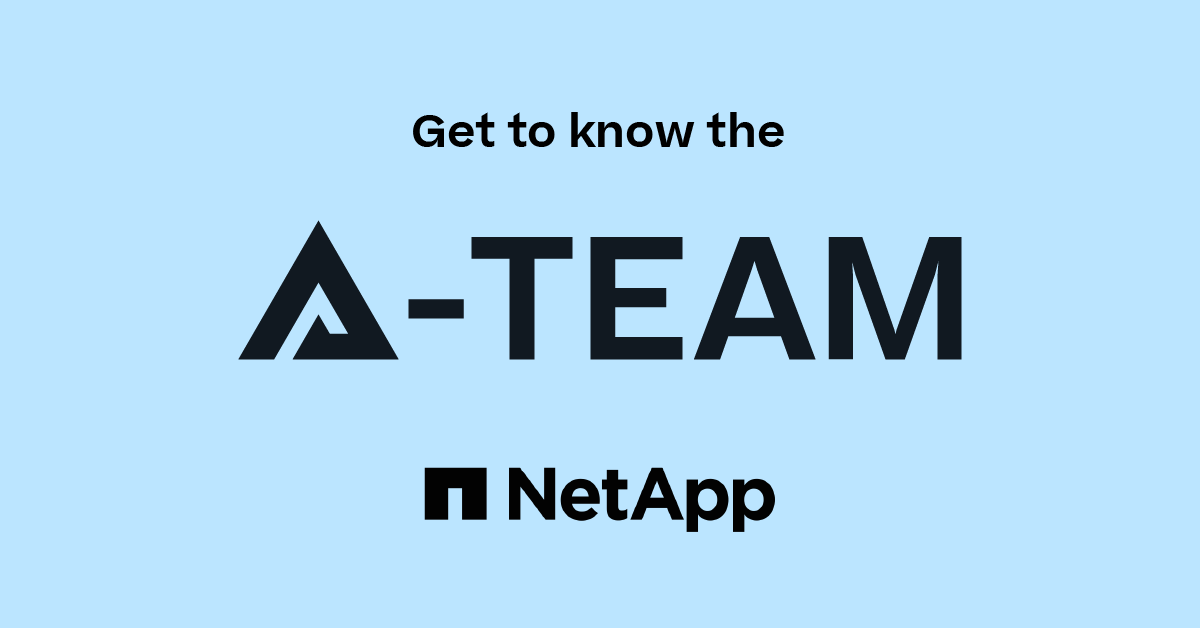Active IQ Unified Manager Discussions
- Home
- :
- Active IQ and AutoSupport
- :
- Active IQ Unified Manager Discussions
- :
- Re: Need some help!!
Active IQ Unified Manager Discussions
- Subscribe to RSS Feed
- Mark Topic as New
- Mark Topic as Read
- Float this Topic for Current User
- Bookmark
- Subscribe
- Mute
- Printer Friendly Page
- Mark as New
- Bookmark
- Subscribe
- Mute
- Subscribe to RSS Feed
- Permalink
- Report Inappropriate Content
I am not a Storage Administrator I work Red Hat servers and systems. However, since I am "IT" it is now in my lane to work the issues. I was experiencing issues with the snapshots building up and being a 6-800% on all my /vol ,snapshots. I have since set the ones to autodelete on that were set to off. I deleted ALL snapshots.
on my SC1 my aggr0 is at 95% and aggr1 100%
and on my SC2 aggr0 is at 95%, aggr1 98% and aggr2 97%.
All the aggregates /.snapshot is 0%.
My version is NetApp release 8.2.2 7-Mode NetApp DS 4243 DS 4246. All command line since I cannot seem to get the GUI to work via Firefox.
Any help is greatly appreciated.
I do show SIS errors where SIS is requesting 4kb of space and only 1kb available. Like I said I am new to NetApp. And the Case number for this is 2007726187, but since I am DOD it is assigned to a secured team for support. But I do not think I need onsite engineer support from NetApp. Never needed it for HP, Windows, VMware, Red Hat, Pure Storage etc.
Thanks
- Mark as New
- Bookmark
- Subscribe
- Mute
- Subscribe to RSS Feed
- Permalink
- Report Inappropriate Content
Trying to figure out the commands to check that. I also have sis on the volumes and aggrs, but NetApp support said the running inline compression and deduplication on HDD's is not good.
tried to grep but no joy
- Mark as New
- Bookmark
- Subscribe
- Mute
- Subscribe to RSS Feed
- Permalink
- Report Inappropriate Content
aggr's that are full are currently scrubbing 9-11% complete.
- Mark as New
- Bookmark
- Subscribe
- Mute
- Subscribe to RSS Feed
- Permalink
- Report Inappropriate Content
- Mark as New
- Bookmark
- Subscribe
- Mute
- Subscribe to RSS Feed
- Permalink
- Report Inappropriate Content
Do me a favor do this
df -Vg
and then pick one volume and do vol options (volumename) and print output here
- Mark as New
- Bookmark
- Subscribe
- Mute
- Subscribe to RSS Feed
- Permalink
- Report Inappropriate Content
Vol Name total used avail capacity mounted on
/vol/events1 58368GB 46480GB 11887GB 80% /vol/events1
The other vol0 is at 0%
and events2 is at 88%
temp_storage is at 195. All mounted to /vol and the .snapshots are all at 0%. This is my Storage Controller 2
- Mark as New
- Bookmark
- Subscribe
- Mute
- Subscribe to RSS Feed
- Permalink
- Report Inappropriate Content
ok, somewhat of a good sign here
Seems you are think
Run this command for me and paste outout
aggr show_space -g
- Mark as New
- Bookmark
- Subscribe
- Mute
- Subscribe to RSS Feed
- Permalink
- Report Inappropriate Content
Hold on. I have to copy everything to paper and then type it in here. It is on a system that has no access to internet.
Sorry.
Working on it now.
- Mark as New
- Bookmark
- Subscribe
- Mute
- Subscribe to RSS Feed
- Permalink
- Report Inappropriate Content
- Mark as New
- Bookmark
- Subscribe
- Mute
- Subscribe to RSS Feed
- Permalink
- Report Inappropriate Content
I did label them Storage Controller 1 and Storage Controller 2 on the paper
- Mark as New
- Bookmark
- Subscribe
- Mute
- Subscribe to RSS Feed
- Permalink
- Report Inappropriate Content
Ok, i confirmed you are 100% thick.
You can thin provision the volumes in order to keep the cluster up and come up with a plan to migrate or get more space, but I would talk to mgmt first
the command to thin them is
vol options volname guarantee none
The danger in doing thin is if you grow more than you have you will take the system down for sure
Good Luck
- Mark as New
- Bookmark
- Subscribe
- Mute
- Subscribe to RSS Feed
- Permalink
- Report Inappropriate Content
Ok, I will check and see what I can do. Thanks. I just thought that deleting the large snapshots from the volumes did not clear up on the aggregates since both volumes had subs that were not set to auto delete. So the .snapshots on the volume side was in the 6-800% for each /vol/whatever/.snapshots/ But evenm after I deleted the snapshots it seems the aggregates did not religuish any of the space after deleting the vol .snapshots
- Mark as New
- Bookmark
- Subscribe
- Mute
- Subscribe to RSS Feed
- Permalink
- Report Inappropriate Content
That doesn't matter if you are thick provisioned and 100% thick, then you deleting snaps are voluming only
So like I said you can either thin the vols or reduce the size of the vols.
- Mark as New
- Bookmark
- Subscribe
- Mute
- Subscribe to RSS Feed
- Permalink
- Report Inappropriate Content
Thanks. Currently having the developers delete lots of old files and other things.
- Mark as New
- Bookmark
- Subscribe
- Mute
- Subscribe to RSS Feed
- Permalink
- Report Inappropriate Content
That isnt going to help until you delete the snaps or turn snaps off or the snaps roll off. Once you delete it goes into the snap once the snapshot runs.
Just an FYI
- Mark as New
- Bookmark
- Subscribe
- Mute
- Subscribe to RSS Feed
- Permalink
- Report Inappropriate Content
So your aggregate snapshot settings look good, and your snap schedule for volumes seem to be the default. As for the snap reserve on volumes, it's a default that everyone has different opinions on but in your current situation I'd recommend setting them all to 0. This will release any free space not used by snapshots and will allow ONTAP to delete snapshots to free space before taking your volumes offsite due to getting full.
The blank response for LUN show tells us you only have NAS volumes, no block LUNs have been provisioned (this would be either Fiber Channel or iSCSI-presented disks to hosts). No need to worry about that then.
So you have already moved (not just copied) mission critical data to another NetApp system? Keep in mind that each shelf is not a NetApp filer/controller, and most systems can support many shelves; it's not the capacity usage that ties up the CPU (well, except during large volume deduplication runs) but instead the IOPS and throughput requests from hosts.
And yes, OnCommand Core can be installed on a Linux system (https://mysupport.netapp.com/NOW/download/software/occore_lin/5.2.4/) and you then connect to it via a browser.
It sounds like you may need either a partner or NetApp SE to help you review your system further to see what needs to be done to handle the capacity of data you have on there. One thing I do know is that ONTAP 8.2.2 will hit the maximum 5 years of support in September 2019, so you'll have to upgrade at least the software by then to continue to get official support from NetApp.
- Mark as New
- Bookmark
- Subscribe
- Mute
- Subscribe to RSS Feed
- Permalink
- Report Inappropriate Content
@JamesIlderton wrote:
For the GUI issue, do you have OnCommand System Manager installed on your admin station? That version of ONTAP did not have an embedded GUI, but if you install it locally you can add the filers and manage them via your browser.
I have tried and failed. There are dependancies to install that must be on our RHEL6 system that we currently do not have. I get servlet errors when I try to go to my NetApp IP address
- Mark as New
- Bookmark
- Subscribe
- Mute
- Subscribe to RSS Feed
- Permalink
- Report Inappropriate Content
This is the link to OnCommand System Manager for Linux:
https://mysupport.netapp.com/NOW/download/software/systemmgr_lin/3.1.3/
Or, if you have a Windows system (or VM) with network access to the NetApp, use the Windows version:
https://mysupport.netapp.com/NOW/download/software/systemmgr_win/3.1.3/
I use the Windows version and know I have to ensure I have both the 32 and 64-bit versions of Java installed, but otherwise it's pretty easy and lightweight. But there's really nothing in the GUI that you can't do in the CLI (at least in your older version of ONTAP, the newest builds have some pretty cool workflows in the embedded System Manager).

